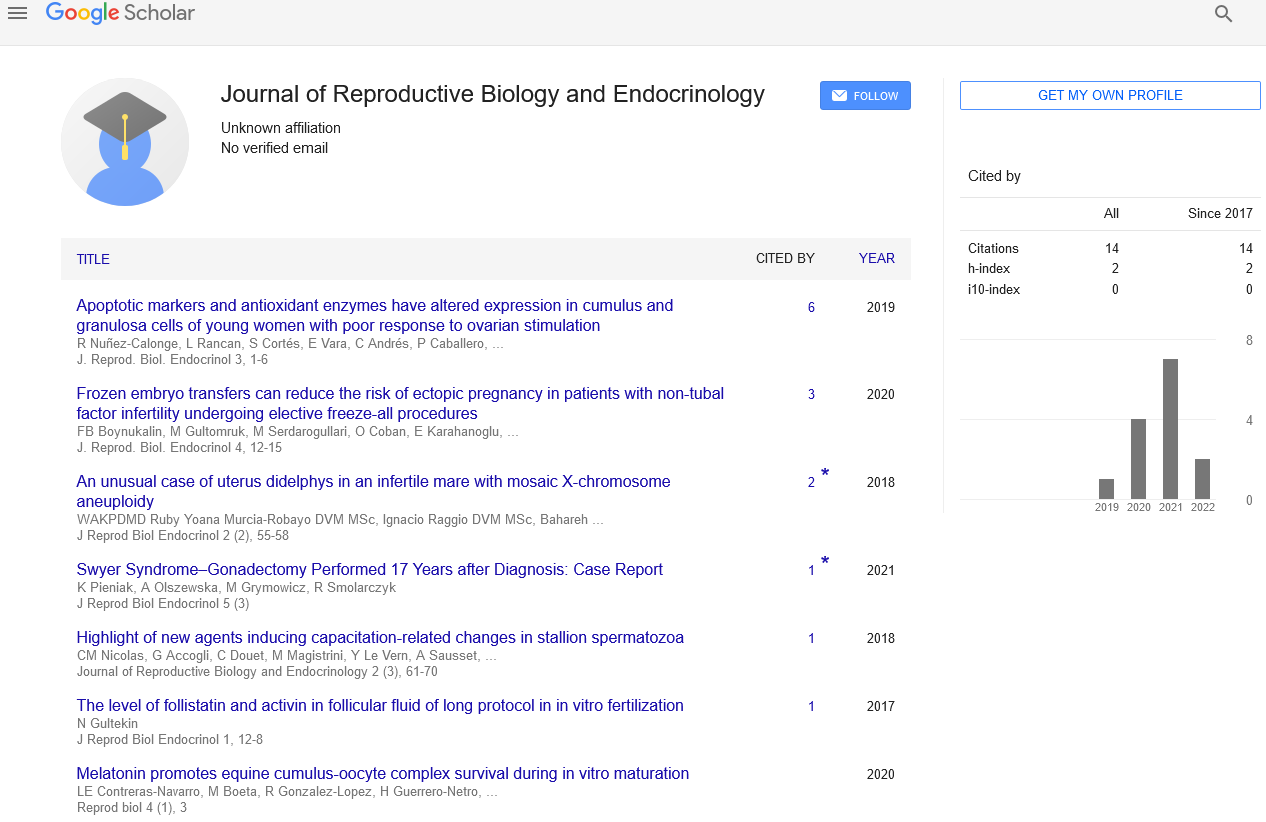Turner syndrome and its effect
Received: 19-Dec-2022, Manuscript No. PULJRBE-22-5927; Editor assigned: 21-Dec-2022, Pre QC No. PULJRBE-22-5927 (PQ); Accepted Date: Mar 29, 2023; Reviewed: 04-Jan-2023 QC No. PULJRBE-22-5927 (Q); Revised: 22-Mar-2023, Manuscript No. PULJRBE-22-5927 (R); Published: 30-Mar-2023, DOI: 10.37532/PULJRBE.2023.7(1).3
Citation: Wilson J. Turner syndrome and its effect. J Reprod Biol Endocrinol 2023;7(1):1.
This open-access article is distributed under the terms of the Creative Commons Attribution Non-Commercial License (CC BY-NC) (http://creativecommons.org/licenses/by-nc/4.0/), which permits reuse, distribution and reproduction of the article, provided that the original work is properly cited and the reuse is restricted to noncommercial purposes. For commercial reuse, contact reprints@pulsus.com
Abstract
The majority of affected women, according to the authors of this article, can be best served by their primary care physicians, who can then make an educated decision about whether or not to refer them to specialists. This is true even though the majority of children with Turner's syndrome are treated by specialists. This article examines current theories about Turner's syndrome genetics, diagnosis, and treatment. One of the most prevalent forms of aneuploidy in humans,Turner Syndrome (TS), affects 1 in 2 000 newborns with a female phenotype. Cytogenetically, sex chromosomal monosomy (45, X), which is present in 50%–60% of patients, is what distinguishes the syndrome. In the other circumstances, a 45, X cell line is accompanied by one or more other cell lines that have an X or Y chromosome that is complete or architecturally aberrant. The risk of gonadal malignancies, particularly gonadoblastoma, is increased in individuals with dysgenetic gonads due to the presence of Y- chromosome material. If chromosome Y-specific sequences are present, the main worry is the high chance of developing gonadoblastoma or other cancers as well as virilization after puberty
Keywords
Ovarian damage; Environmental factors; Genetic aberrations; Hormone replacement Turner syndrome
Introduction
Turner's syndrome was the same syndrome that both writers were researching.
One of the most prevalent forms of aneuploidy in humans, Turner's Syndrome (TS), is present in 1 in 2000 neonates with a female phenotype.
In 1959, in England carried out the first karyotype analysis on a TS patient. These authors were able to describe the 45, X karyotype, or Xchromosome monosomy, which is the type that patients with TS8 most usually had.
People with TS have phenotypes that are incredibly varied. They have distinctly female exterior and internal genitalia while having undifferentiated gonads. Their uterus is small, nevertheless, as hormonal stimulation is necessary for its entire growth. The gonads are often two fibrous streaks in which tissue resembling the stroma of the ovarian cortex rather than germ cells or follicular forms can be found.
Description
Furthermore, TS incidence does not rise with maternal age as compared to other numerical chromosomal defects, such as Down syndrome or chromosome trisomy. These results disprove meiotic nondisjunction as the primary mechanism for producing a 45,X karyotype. Clinically, even people with a pure 45, X karyotype exhibit radically different characteristics, in contrast to other chromosomal disorders. All other data are contradictory, with the exception of small stature, which appears to be a general trait.
Since the diagnosis is typically made by analysing between 5 and 30 peripheral blood lymphocytes to determine the karyotype, and the second cell line is frequently present as a proportion of no more than 1% to 2% of the individual's cells, undetected mosaicism may be one of the explanations for this fact.
Conclusion
It is still debatable how the Y chromosome contributes to the development of human cancer. The high risk that tumours like gonadoblastoma or other, non-tumorigenic androgen producing lesions might develop in the dysgenetic gonads of patients with hidden Y-chromosome mosaicism or Ychromosome specific sequences, however, makes the identification of Ychromosome mosaicism clinically significant. Although gonadoblastoma is a benign tumour, it has the potential to evolve into other malignant germ cell tumours and, in 60% of instances, invasive dysgerminoma. Y-chromosome specific sequences should be investigated using PCR, which is a highly sensitive, affordable, and simple method, even though some authors have questioned the high incidence of gonadoblastoma (around 30%). This is because it is possible that some type of gonadal lesion, whether tumoral or not, may develop.





